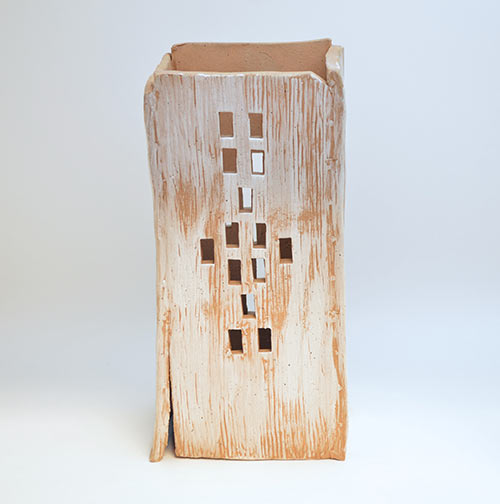It’s been a while since we’ve offered a clay class at the Gibbes, and we’re excited to have Liv Antonecchia from Surface Craft Gallery teaching a clay hand-building series this fall. We asked Liv a few questions about her experiences working in the medium and what she hoped to teach her students. Check out her responses, and if you’re intrigued, register for her class which begins next week!
How did you start working in clay as a medium?
LA: I started working with clay when I was a sophomore at the Virginia Commonwealth University’s art school in Richmond, VA. I decided on a Craft/ Material Studies major and with that fell into Hand-building with Clay 101 course. Thinking back on it I believe it just fit into my schedule right!
What is your preferred method and do you prefer a particular type of pottery?
LA: I love to be able to go from working on the wheel one day to hand building the next day. The mix is great mentally to work out different ideas and also physically, changing from sitting down throwing to standing up hand building. It has been hard for me to stick with one method or way of working for a long period of time. For instance, I can do short little batches of production work like 6 mugs here and there but nothing compared to real production that some potters do like thirty mugs a day. I cannot say one particular style of pottery is my favorite. It’s hard to decide! Lately, I have loved the different way graphics and drawings are applied to ceramics.
What was your biggest clay disaster?
LA: Aside from launching hunks of clay off the potters wheel while I was learning, I think the biggest clay disaster was a couple of years ago. I tried a new clay and threw several big bowls only to have most crack in the kiln. That was enough of that clay.
Why is hand building a good place to start working with clay?
LA: I started working with clay hand building and I recommend that because it lets you work with the clay in so many different ways other than throwing. Then when you start using a potters wheel you see more finishing possibilities having already had some hand-building experience. You can use that in altering your thrown piece, like adding elements to it.

12 x 5 x 5 in.; Courtesy of the artist.
What types of pieces will students create? Will they be decorative only or utilitarian?
LA: Students will create a slab-built free form piece that could be functional or sculptural. They will also sculpt a closed form, such as a gourd shape. Another sculptural piece they will make is a hanging tile to try out sgraffito and stamp techniques with their design. On the last week they will create a functional slab-built bowl to texture how they wish. So they should come out of the class with both functional and decorative pieces.
What skills will your students take away at the end of the series?
LA: At the end of the course students will experience multiple possibilities available with clay. They will have learned slab hand building, coil building, solid form construction and surface techniques like sgraffito, making and using stamps, and one form of image transfer. Basic glazing and using underglazes will also be covered.
Anything else you want to add?
LA: I will be giving the students basic information on clays, firings, and supplies. I’ll also suggest some great websites of artists who take the techniques they will learn in class to the next level. I think many of the students will be surprised to see what a diverse medium clay is!
Top image: Turquoise Crater Bowl, 2016, by Liv Antonecchia; Hand-built Stoneware; 9 x 5 in.; Courtesy the artist.
Published September 1, 2016

